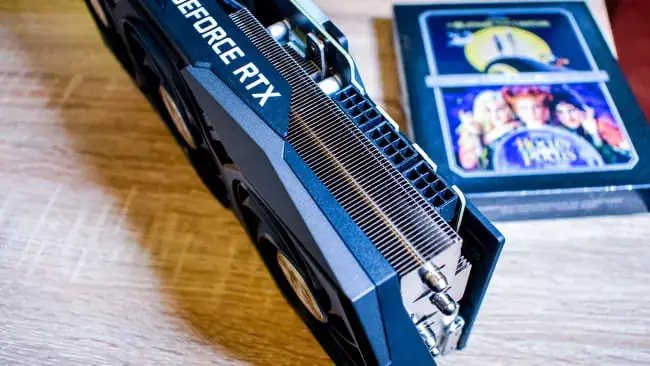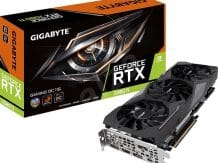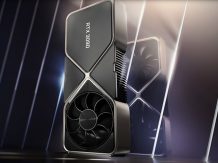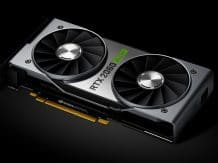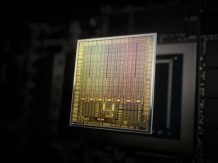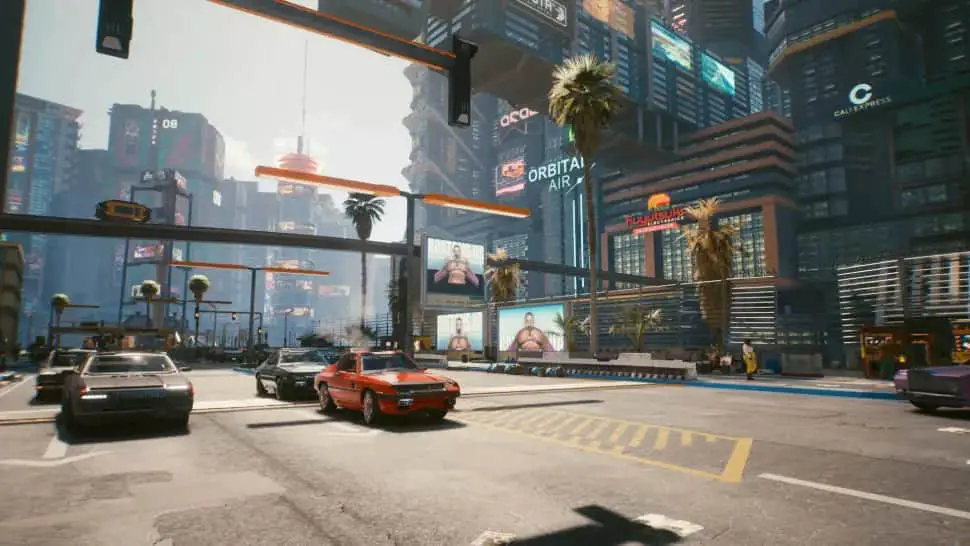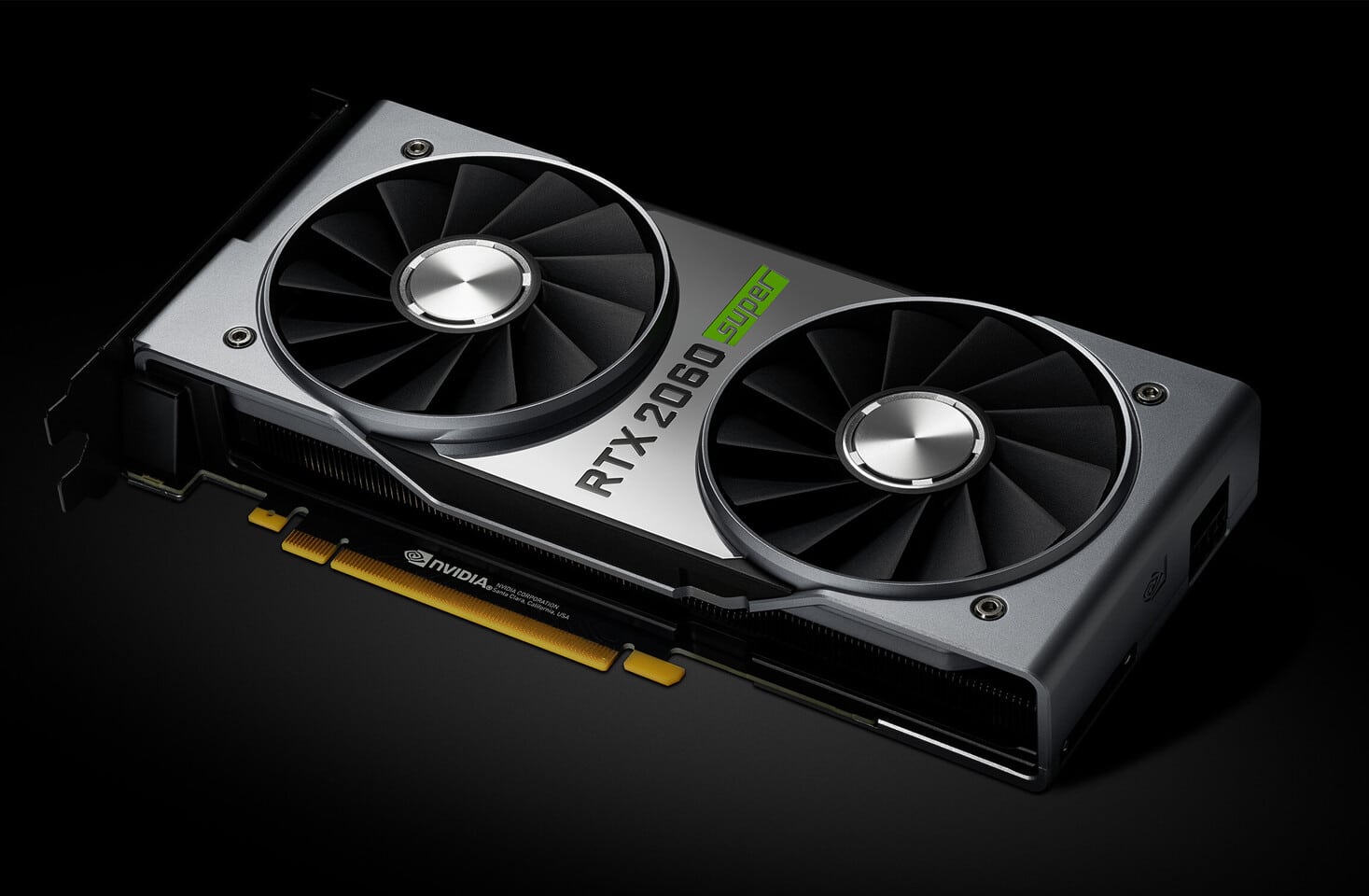Nvidia in 2020: Summing Up
–
Ampere was an impressive debut, but not without problems.
In the consumer segment this year, Nvidia had one major release: the launch of the RTX 3080. In this case, the medal was won on two sides, the first was the incredible performance step implemented by the new GPUs, frankly, the result is amazing. Whereas the flip side of the coin that darkened Nvidia’s feat was a catastrophic shortage of product in warehouses, simply unable to meet consumer demand.
Naturally, 2020 wasn’t limited to Ampere graphics cards, Nvidia also made a breakthrough in audio and also opened its eyes to an acquisition that could have huge implications for the tech world. Let’s take a closer look at the manufacturer’s achievements before looking at the potential of the Green Team next year.
(Image credit: Future)
Nvidia’s main move in 2020 was the introduction of Ampere graphics cards, also known as the RTX 3000 series.
Three graphics cards were unveiled first in September: the RTX 3090, the flagship RTX 3080 and the RTX 3070, each launched in September, with the exception of the RTX 3070, which was delayed until October. The RTX 3060 Ti arrived later in December.
So, we are again discussing two points: performance and availability. Nvidia certainly did well on the first thread, as the RTX 3000 graphics cards represent a huge step up from the latest generation Turing graphics cards.
In our review, we were particularly impressed with the manufacturer’s latest offering, the GeForce RTX 3060 Ti, which outperforms the competition and scores better than the RTX 2080 Super.
A clear indication of how good Ampere graphics cards are comes from a ranking of the best graphics cards of the year – Nvidia RTX 3000 GPUs are in four of the top five spots at the time of this article (the only AMD product in the top five came in fourth, the Radeon RX 5600 XT, which still struggles for a competitive price tag for 1080p players).
When it comes to ray tracing, Nvidia completely dominates AMD. And if the first Big Navi graphics cards released by AMD at the end of the year turned out to be worthy competitors in terms of raw performance, even in the flagship range – albeit not quite, although the AMD RX 6800 is a compelling proposition compared to the RTX 3070 – but the failure took place in the field ray tracing. And while some people continue to argue that they will survive the lack of tracing in game effects, it is obvious today which direction the industry is heading, just look at the new consoles.
So, while there can be no doubt that Ampere was Nvidia’s biggest win in 2020, problems arose when it came to accessibility. Once RTX 3000 models hit the shelves following Nvidia’s phased launch starting in September, they sold out in no time.
And due to the low stock of video cards and the huge demand, the problem was aggravated by the fact that scalpers and bots cut sales – buying video cards for subsequent resale at extortionate prices on eBay and similar sites.
This state of affairs has disappointed potential RTX 3000 users who have to scour web forums and constantly monitor online stores to grab a piece of the small and new batch Ampere is entering the market for. Nvidia has already admitted that inventory problems will persist until 2021 and, unfortunately, the first few months of the year.
All of this leaves the door open for AMD Big Navi, which could benefit from a bunch of hungry gamers looking for a new high-performance graphics card, but as luck would have it – at least from Nvidia’s point of view – AMD’s stock problems were no less, if not more.
Of course, this state of affairs could not but disappoint consumers, because both companies failed with the release of their video cards, leaving very little chance for users, unless you are too lucky or are willing to overpay ridiculous money.
So Nvidia may have won the battle for new GPUs in 2020, a real battle to get products on store shelves for gamers to buy is sadly lost by both companies.

(Image credit: CD Project Red)
| DLSS GETS BETTER!
Nvidia RTX 3000 graphics cards made 4K gaming a reality in 2020. As we already noted in our review, the GeForce RTX 3070 is notable for finally making 4K games available (the same goes for the RX 6800), costing half the price of what had to be paid for the same performance in the previous generation, and just behind the RTX 2080 Ti.
And as we mentioned, the new Ampere GPUs also boosted ray tracing performance significantly, and then Cyberpunk 2077 burst onto the gaming scene in December, causing a lot of controversy, but the game really showed us how good ray tracing is in modern games.
We see interesting advances here, but in fact, another area where Nvidia has had a resounding success in 2020 is becoming an important achievement, and we’re talking about a new incarnation of DLSS (2.0) technology here.
DLSS allows you to increase the resolution using an intelligent system that allows the computer to run games at a lower resolution and then improve the picture quality. So, for example, 4K resolution or something similar to it can be obtained from a source at 1440p. This solution will keep performance for ray tracing, for example.
To give you some examples of what this technology is capable of. Call of Duty: Black Ops Cold War sees significant performance gains, up to 85% in 4K thanks to DLSS 2.0. Cyberpunk 2077 plays at 22 FPS on an RTX 3090 graphics card (with Intel Core i9-10900K), maximum graphics settings (4K Ultra and tracing at maximum), but enable DLSS (in Performance mode), and the game will be released at 58 FPS almost tripling the frame rate.
In other words, Cyberpunk 2077 goes from being unplayable at maximum settings to playing smoothly by simply switching DLSS. There is a slight loss of picture quality in performance mode, but make no mistake – DLSS is a fantastic solution at this price point.
Of course, there are caveats, games must be encoded to support DLSS. And the concern we voiced recently is that developers can rely on DLSS to achieve acceptable frame rates in AAA projects when we use Ampere and Big Navi graphics cards powerful enough to play 4K without this technology. You should pay attention to this, as the gaming industry is actively striving forward.

(Image credit: Nvidia)
| NOT ONLY GRAPHICS, BUT SOUND
Nvidia’s RTX technology isn’t just about graphics, it’s also about audio, which we already discussed in 2020. Back in April, Nvidia showed off RTX Voice, a noise-canceling feature that really improves sound quality when recording voice messages and video calls from your PC. Basically, the technology finely filters background noise with smart AI processing technology – so when you’re working from home and your dog barks at someone passing by on the street during a work video call, no one is there. the end will not hear the dog.
It’s good to see that the GPU sees its functions more broadly – this solution promises to be very useful. This productivity-focused feature has been and remains extremely desirable, especially during homework amid the COVID-19 pandemic.

(Image credit: Nvidia)
| GEFORCE NOW ON AIR!
The streaming service Nvidia GeForce Now finally came out of beta testing, officially presented in February, almost immediately after the launch of Now, disasters followed one after another, namely, the service was leaving the major publishers.
First of all, Activision Blizzard pulled all of its games from GeForce Now, followed by Bethesda, followed by Games, Xbox Game Studios and Warner Bros. These companies took with them a number of high-profile games that were removed from the platform in the first year, leaving many players unhappy. Indeed, a shaky start with an official launch, although the service has shown amazing streaming performance.
Subsequently, Nvidia changed the way games were delivered to the streaming service to avoid the licensing issues that led to the churn of publishers. Good news followed, including the return of Square Enix to GeForce Now.
Cyberpunk 2077 was, of course, the crown jewel of the streaming service, allowing owners of underpowered machines to enjoy the game complete with excellent ray tracing – even on Chromebooks. There were naturally long lineups and some performance issues when launching the game, which is not surprising given the influx of players hungry for the most up-to-date game from CD Project Red.
Still, it’s clear that behind all the problems – and some pretty nasty flops – Nvidia has done something great with GeForce Now. We hope the company can renegotiate terms and bring back some of the biggest publishers who left in the early days, the streaming offering promises to grow.

(Image credit: Nvidia)
| ARMS AND LEGS
Nvidia made a major acquisition in 2020. Huge acquisition. As you probably remember, the company bought ARM for $ 40 billion and, as we said, it happened in September, a major shift in the tech world – if the deal ends.
One can only guess what the consequences will be and how this acquisition could turn out for the entire market. But Nvidia promises not to rock the boat, maintaining the neutrality that ARM has adhered to, meaning the Greens are not going to scare ARM’s big customers.
So yes, the situation is interrogative, but for now we have to be content with a question mark. As one CCS Insight analyst stated, “It is very difficult to understand how Nvidia can balance its own requirements with the existing requirements of the ARM ecosystem.” Of course, we have yet to see if the deal can smooth out all the corners.

(Image credit: Nvidia)
| FINAL THOUGHTS
Overall, 2020 has been a good year for Nvidia, culminating in the RTX 3000 graphics cards, which have proven to be the best graphics cards ever made. The leap in performance in the Ampere generation was a giant one, but an equally giant stumbling block was the fact that most people could not – and still cannot – buy graphics cards because inventory was scarce and demand is still exploding.
For some users, the situation gives a bad taste, such people could go over to AMD – if Big Navi video cards did not suffer from the same problem. Be that as it may, we are today in a strange position, when the problem is not in performance, but in accessibility, will determine the winner in the war of video cards. If AMD manages to put the graphics cards faster, then, probably, the lack of ray tracing will recede into the background.
What we can hope to see in 2021 – a solution to classic issues from Nvidia and AMD, as well as potentially fresh Nvidia graphics cards – there are rumors of a new RTX 3080 Ti (a while ago), as well as a budget RTX 3050 (yes, it looks like Nvidia decided to completely abandon the GTX models, all-in with ray tracing). The latter is especially hotly anticipated as the most affordable way to improve Ampere’s performance.
Nvidia is also promising to release RTX 3000 laptop graphics cards in early 2021, and they will likely be showcased at CES, allowing gaming laptops to take a step further. It will be tempting to see them paired with AMD Ryzen 5000 processors.
However, a key aspect of 2021 will be stock management, and if AMD surpasses Nvidia, Team Green will have a shaky start to the new year. Broadly speaking, the development to watch out for is the ARM deal, and when (and if) it takes place, Nvidia will have to work on aspects of that acquisition.
Choose the best Nvidia graphics card for you.





